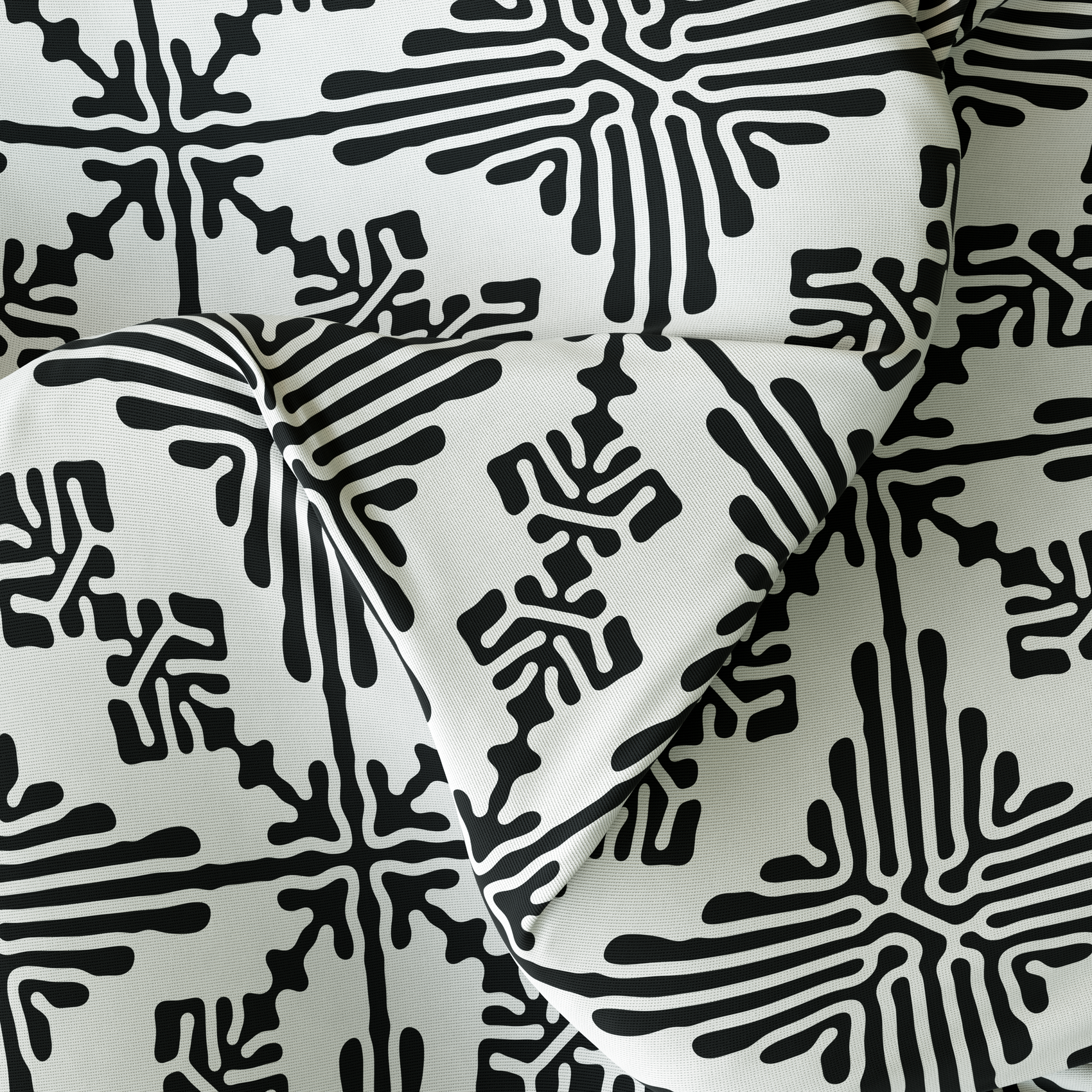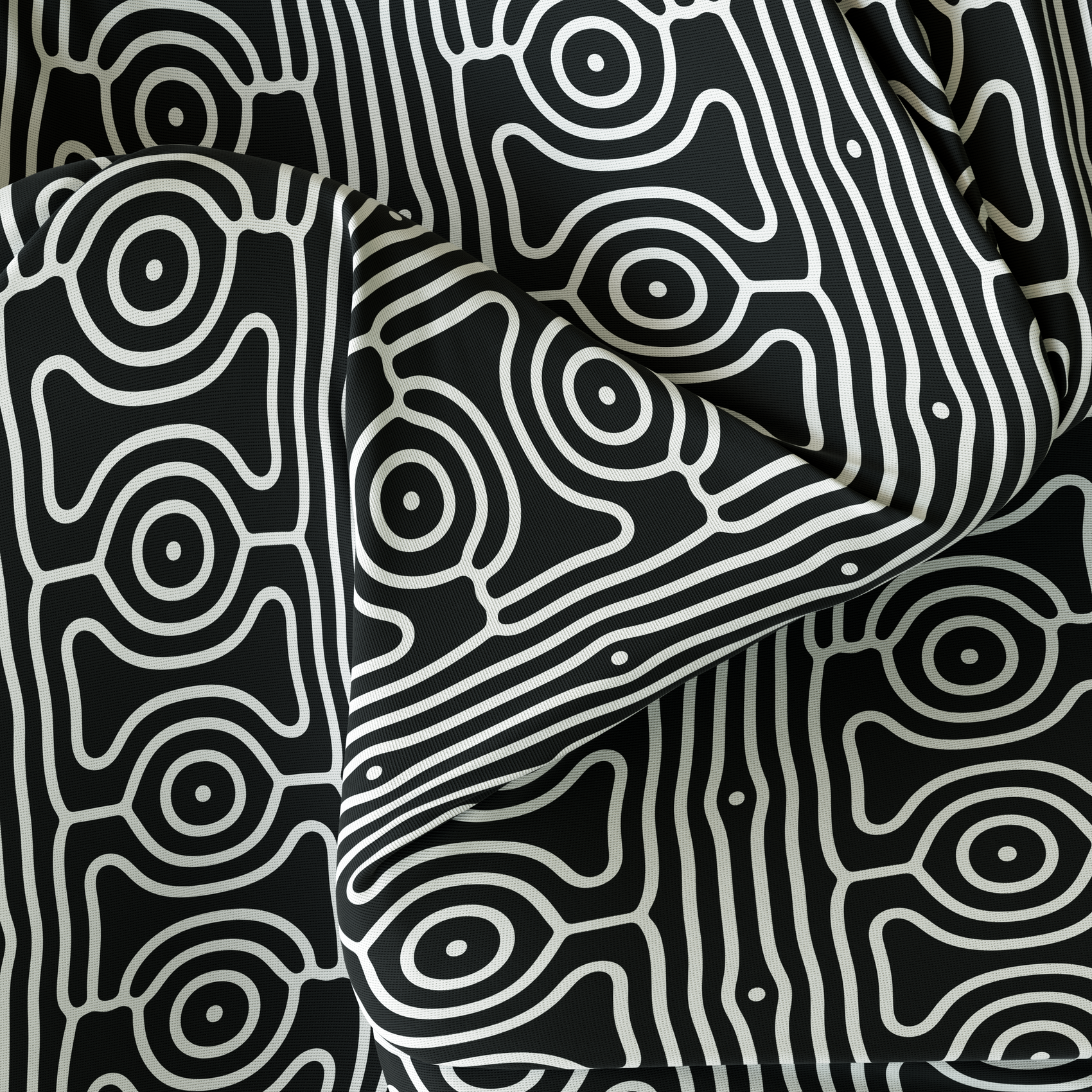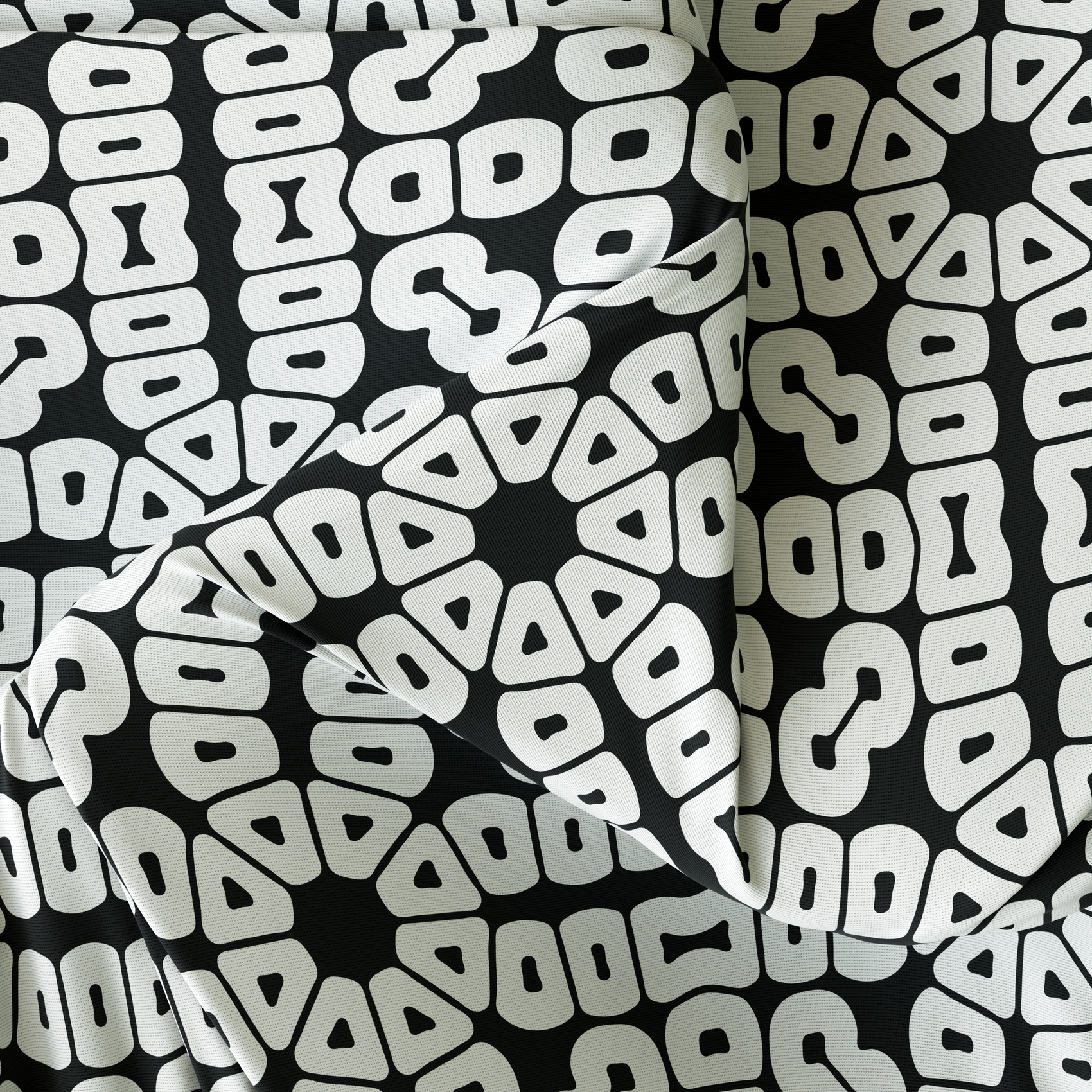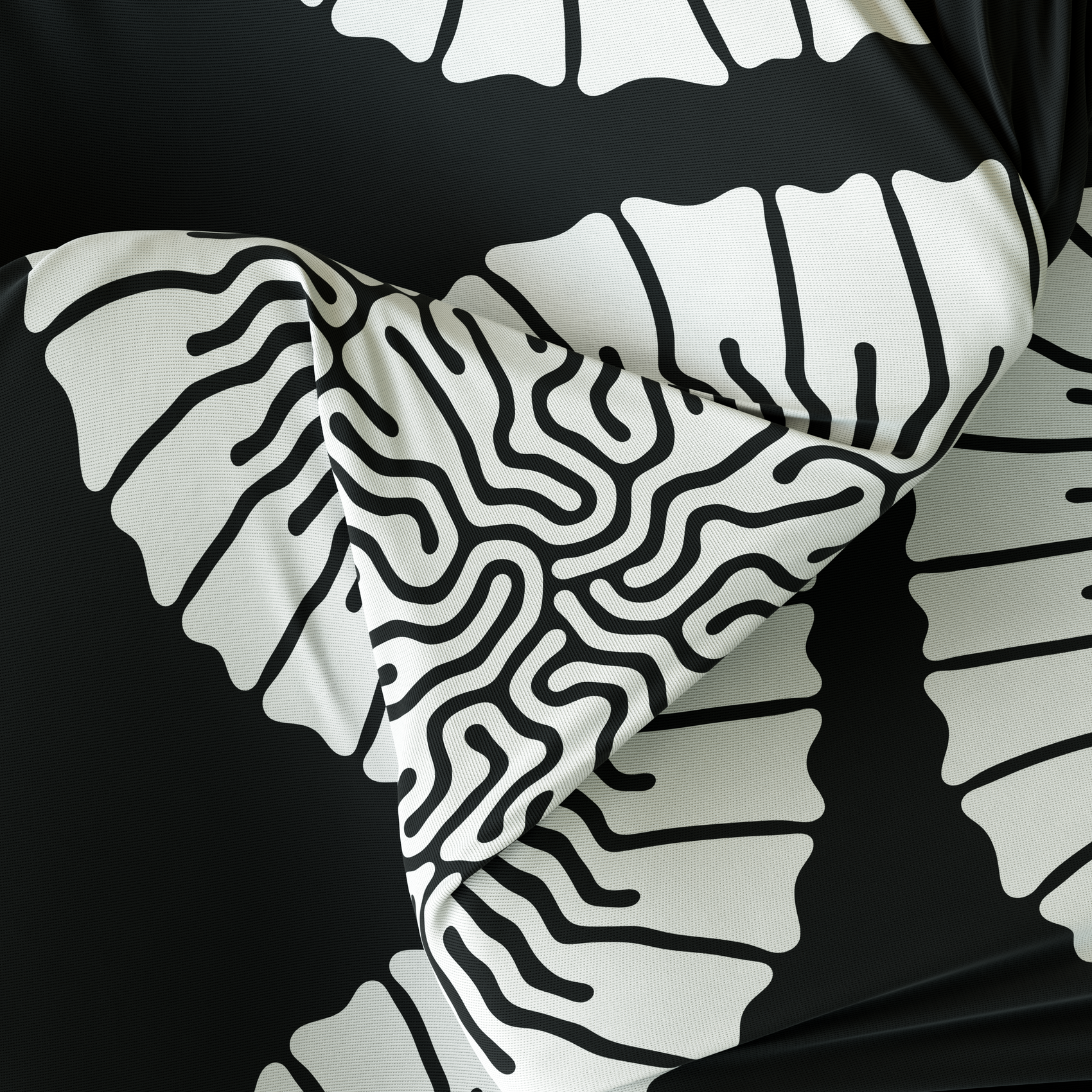Pattern Language

Xochitl | The Bloom of Continuity
Xochitl blooms in the heart of Mesoamerican spirituality and artistry. Xochitl, which means 'flower' in Nahuatl, the language of the Aztecs, celebrates life as an emblem of the transient beauty that adorns the earth and the heavens in a perpetual cycle of birth, growth, and renewal. This textile pattern encapsulates the essence of the flower, a symbol deeply interwoven into the fabric of Mesoamerican life. Each line and curve of this intricate design mirrors the natural elegance and complexity of a blossom. The symmetry and order resonate the Aztec belief in the meticulous balance of the cosmos, where every element has its place, and every place its meaning. 'Xochitl' is a tribute to the legacy of the ancients, a thread that connects the past to the present, reminding us that beauty, in its deepest form, is a dialogue between the world and those who witness it.

Maji | Ripples of Continuity
Within the vast tapestry of existence, Maji, the Swahili word for water, serves as a profound metaphor for the flowing pattern that adorns this textile. Water is the essence of life, an eternal flow that sculpts the bedrock of time, shaping history and nurturing cultures. This design captures both the fluidity and the perpetual motion of life itself. Like the winding rivers that cross the African landscape, the lines of Maji bear witness to nature's gentle caresses and its relentless power. The pattern undulates with the rhythm of the tides, the heartbeat of the earth, and the cosmic ballet. It resonates with the human spirit, reminding us that we are intertwined with this magnificent cycle, an integral part of a grand narrative inscribed in the language of waterways and oceans. Maji mirrors the profundity of our emotions and the lucidity of our intellect, suggesting that as water reshapes stone, our thoughts and deeds have the power to transform the world.

Jukurrpa | The Dreamtime
Jukurrpa, sacred to Australian Aboriginal culture, signifies 'the Dreaming,' the timeless narrative that shapes the cosmos. This pattern, named after such profound storytelling, mirrors the intricate visual language of ancestral lore. Its visual language, reminiscent of natural elements such as stones or pathways, is arranged in a way that suggests connectivity and continuity. The form has a totemic appearance, serving as symbolic representations of larger concepts, resonating with the tradition of storytelling through symbols found in Australian Aboriginal art. The use of negative and positive space is balanced, allowing the pattern to exhibit a dynamic yet harmonious flow. This balance reflects the duality often present in Aboriginal mythology, where every element has its place within a greater whole.

Seiwa | The Harmony of Serenity
At the heart of tranquility lies Seiwa. This pattern speaks to the soul's yearning for peace and harmony. Drawing inspiration from the profound stillness of a Zen garden, 'Seiwa' is an ode to the art of balance and contemplation. Each line flows with purpose, akin to the deliberate strokes of a rake across sand, cultivating not just the soil, but also the mind's garden. This design embodies 'sei' (静), the essence of quietude that pervades the sacred spaces where one finds repose away from the clamor of the outside world. It captures 'wa' (和), the principle of harmony that underlies the Japanese ethos, where every element exists in a thoughtful symphony with the others. 'Seiwa' is not merely a pattern; it is a meditative journey. It invites the observer onto a path of introspection, guiding them through waves of calm and layers of inner silence.
